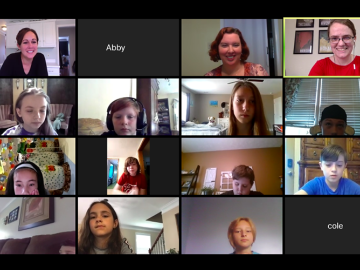
Filter News
Area of Research
- (-) Materials (96)
- (-) National Security (17)
- (-) Nuclear Science and Technology (14)
- Advanced Manufacturing (7)
- Biology and Environment (80)
- Biology and Soft Matter (1)
- Building Technologies (2)
- Computational Biology (2)
- Computational Engineering (2)
- Computer Science (5)
- Electricity and Smart Grid (1)
- Energy Science (175)
- Energy Sciences (2)
- Functional Materials for Energy (2)
- Fusion and Fission (12)
- Fusion Energy (1)
- Isotope Development and Production (1)
- Isotopes (28)
- Materials for Computing (13)
- Mathematics (1)
- Neutron Science (127)
- Quantum information Science (1)
- Supercomputing (108)
- Transportation Systems (2)
News Topics
- (-) Energy Storage (35)
- (-) Frontier (3)
- (-) High-Performance Computing (8)
- (-) Isotopes (16)
- (-) Neutron Science (40)
- (-) Quantum Computing (3)
- (-) Space Exploration (7)
- (-) Transportation (16)
- 3-D Printing/Advanced Manufacturing (28)
- Advanced Reactors (15)
- Artificial Intelligence (21)
- Big Data (7)
- Bioenergy (15)
- Biology (8)
- Biomedical (9)
- Biotechnology (1)
- Buildings (6)
- Chemical Sciences (32)
- Clean Water (3)
- Composites (9)
- Computer Science (35)
- Coronavirus (7)
- Critical Materials (13)
- Cybersecurity (21)
- Environment (21)
- Exascale Computing (2)
- Fusion (16)
- Grid (11)
- Irradiation (1)
- ITER (1)
- Machine Learning (16)
- Materials (74)
- Materials Science (79)
- Mathematics (1)
- Microscopy (27)
- Molten Salt (7)
- Nanotechnology (39)
- National Security (35)
- Nuclear Energy (53)
- Partnerships (15)
- Physics (30)
- Polymers (17)
- Quantum Science (12)
- Security (11)
- Simulation (2)
- Summit (4)
Media Contacts

Research by an international team led by Duke University and the Department of Energy’s Oak Ridge National Laboratory scientists could speed the way to safer rechargeable batteries for consumer electronics such as laptops and cellphones.

Oak Ridge National Laboratory researchers have developed a thin film, highly conductive solid-state electrolyte made of a polymer and ceramic-based composite for lithium metal batteries.

With Tennessee schools online for the rest of the school year, researchers at ORNL are making remote learning more engaging by “Zooming” into virtual classrooms to tell students about their science and their work at a national laboratory.

In the race to identify solutions to the COVID-19 pandemic, researchers at the Department of Energy’s Oak Ridge National Laboratory are joining the fight by applying expertise in computational science, advanced manufacturing, data science and neutron science.

Oak Ridge National Laboratory researchers working on neutron imaging capabilities for nuclear materials have developed a process for seeing the inside of uranium particles – without cutting them open.

Energy storage startup SPARKZ Inc. has exclusively licensed five battery technologies from the Department of Energy’s Oak Ridge National Laboratory designed to eliminate cobalt metal in lithium-ion batteries. The advancement is aimed at accelerating the production of electric vehicles and energy storage solutions for the power grid.

The formation of lithium dendrites is still a mystery, but materials engineers study the conditions that enable dendrites and how to stop them.

To better determine the potential energy cost savings among connected homes, researchers at Oak Ridge National Laboratory developed a computer simulation to more accurately compare energy use on similar weather days.

If humankind reaches Mars this century, an Oak Ridge National Laboratory-developed experiment testing advanced materials for spacecraft may play a key role.

Researchers at the Department of Energy’s Oak Ridge National Laboratory have received five 2019 R&D 100 Awards, increasing the lab’s total to 221 since the award’s inception in 1963.


